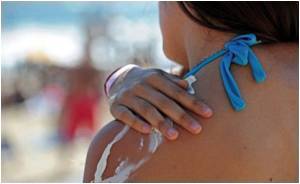A new study says that cyanobacteria - organisms that thrived on Earth before there was enough oxygen to block harmful ultraviolet light-could pave way for new and improved sunscreens.

Also known as blue-green algae, cyanobacteria have existed on Earth for 3.4 billion years. They get their energy from sunlight via photosynthesis, but in doing so, they must expose themselves to UV radiation, which damages DNA molecules - a serious problem for early life, before the "great oxygenation event" around 2.4 billion years ago.
One way today's cyanobacteria combat UV exposure is to make small-molecule sunscreens called mycosporines and mycosporine-like amino acids (MAAs) that absorb the harmful rays.
Now, for the first time, Emily Balskus and Christopher Walsh of Harvard Medical School in Boston, Massachusetts, have found the genes and enzymes involved in the biosynthesis of these sunscreen molecules.
Using a genome-mining approach, the duo identified a gene cluster that could be responsible for making sunscreen molecules in a cyanobacterium called Anabaena variabilis.
To test the genes, they expressed the cluster in the bacterium Escherichia coli, which normally does not make sunscreen molecules. Afterwards, the team found the bacteria could make the molecules.
Each MAA has two amino acids linked to a central organic group.
"Our work could be a starting point for devising new routes to these molecules or analogues using a biocatalytic or biological engineering approach," New Scientist quoted Balskus as saying.
"We don't yet know if biological sunscreens will end up being any better than man-made sunscreen ingredients, since Helioguard is a relatively new product. But they do have the photochemical properties desirable in sunscreens," she added.
Bradley Moore of the University of California, San Diego, says the work solves a long-standing biosynthetic question concerning MAAs in diverse organisms.
"It's a beautiful study and a very illuminating one that may have applicability for the development of new sunscreens," he added.
The study has been published in the journal Science.
Source-ANI
 MEDINDIA
MEDINDIA



 Email
Email







